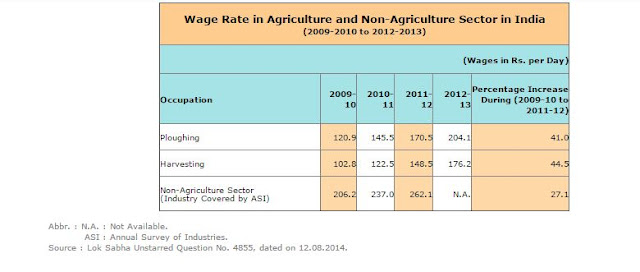Phillips curve between the government of India and the Reserve Bank of India.
The speech given by Deputy Governor Viral Acharya intensified the conflict of interest between RBI and Central Government. Let's examine that.
The real facts behind the conflict are not clear but the most highlighted issue is the transfer of reserves to reduce the fiscal deficit. The government of India is committed to reducing the fiscal deficit to 3% of GDP under the FRBM framework. In March of 2018, the target is revised and 3.5% becomes a new target. On the other hand, we have foreign exchange reserve of US$393524 million on 18th October 2018. It was $ 426082.4 million on 13th April 2018. It is declining from last few months.
Data source - Reserve Bank of India
What if we use this reserve to control the fiscal deficit? One should understand that the RBI also holds the government securities and lend the money to the government. Therefore borrowing money and taking money will have a huge impact on inflation. This will put more inflationary pressure on the economy. Another thing is that these reserves are required to face the future risk that is risk generated from the foreign exchange market, depreciation of Rupees etc. Therefore it is not good to use these reserves to finance the deficit.
Another highlighted issue is the problem of NPAs. It is important to understand the main root cause behind the NPAs. The finance minister of India pointed out the problems in the regulatory body i.e. RBI. But that's not the complete truth. The problem NPAs is not because of the CREDIT MIS-MANAGEMENT but it's because of the CREDIT MIS-ALLOCATION. The weak prediction of the growth and weak understanding of the growing sector created the misallocation of the credit therefore rather than giving credits to the efficient player, credits were given by banks to the inefficient player who was efficient through myopic lenses. The government made the same mistakes and encourage the sectors which have no potential to generate enough returns. And therefore defaulters continue to receive the credit partially due to the relationship with the bank and partially due to the government's encouragement. Under these circumstances, the government wants relaxation for certain sectors. That will again intensify the problem of the NPAs. So if the government wants more credit to certain sectors then first the government should inject enough capital in that sector. Remember, the problem of NPA is not because of the measurement used to identify the NPAs, the problem of NPAs exists because it actually exists!
The difference of the opinion comes from the approach of solving the problem NPAs also. The immediate steps should be taken to inject the capital as it is observed that the well-capitalized banks avoid the problem of the misallocation of the credits. The government is trying to inject the capital on the line of International Standard Practices through plans like Indradhanush. The capitalization can be done directly as well as indirectly, indirectly by lowering the rates which are the responsibility of the RBI and directly by the government. And it is observed that the Reserve Bank of India is witnessing the pressuring to use the indirect method of capitalization. But this method is not used specifically to tackle the problem of NPAs. It is used to expand the credit not to solve the problem of the misallocation of the credit.
Now there are some other issues like separate Public Debt Managment Agency to manage the borrowing which is currently managed by the RBI, separate framework of payment and settlement. The RBI is the central bank of India. How can one separate the system of the transaction from the RBI? That is ridiculous. The payment and settlement have to be with the RBI.
The whole issue is due to the conflict between the objectives of the government and the RBI. The government is unable to generate the employment. To hide the failure of the fiscal policies, the government is trying to point out the problem of liquidity which is the responsibility of the RBI (Again one might say that it's because of the demonetization but for simplicity, this argument is avoided). The liquidity is essential for growth which will generate the employment. But liquidity comes with inflation. To stabilize the price level and control the inflation, liquidity must be controlled. The RBI's primary aim is to stabilize the price level. The government should adopt efficient fiscal policies rather than pointing out the liquidity problem.
The RBI is on Y-axis and the government is on X-axis of the Phillips curve. Both should find an efficient point on the graph.
The RBI is on Y-axis and the government is on X-axis of the Phillips curve. Both should find an efficient point on the graph.

.jpeg)


टिप्पण्या
टिप्पणी पोस्ट करा